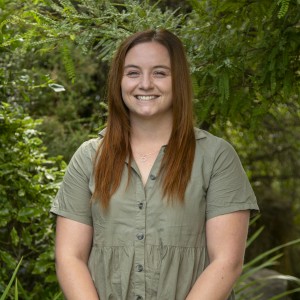Wow! It looks like ropes plated together!
Observing Fabrics with a Microscope
Students began by examining various fabric samples under a microscope. This approach allowed them to observe the detailed properties and structures of different fabrics.
By using a phone magnifying camera attachment, students captured images of the fabric samples they observed. This not only allows them to document their finding, it encourages them to explore and notice different types of textiles in detail.
Through observing fabrics at a microscopic level, students made careful and descriptive observations, asked questions, and drew conclusions based on evidence.
Foam has a lot of bubbles. That means it can float and soak up water into the air pockets. It is soft and squishy which means it is good for inside couch cushions and mattresses.
Noticing the Fibres
A fascinating aspect of observing fabrics under a microscope was the ability to see the individual fibres that make up different textiles. Students noticed:
- Natural Fibres: The long, smooth strands of silk or the fluffy, irregular fibres of wool.
- Synthetic Fibres: The uniform, consistent appearance of synthetic blends, such as polyester or nylon.
These observations help students understand the differences between natural and synthetic fibres and their impact on the fabric's properties.
My material is satin. It is tightly woven. Boxers use satin for their fighting shorts because they are lightweight and make it easier for the boxer to move around.
Exploring Woven Patterns
As students examined the fabric samples, they noticed different types of weaves and patterns. This can include:
- Plain Weave: A simple over-and-under pattern seen in many fabrics like cotton.
- Twill Weave: A diagonal pattern found in fabrics such as denim.
- Complex Patterns: Intricate weaves that create unique designs and textures.
This exploration encourages students to consider how different weaving patterns affect the appearance and functionality of the fabric.
My material is denim. We use it to make jackets, skirts, pants and shorts. It has gold threads woven into the blue threads. Denim is not good to get wet because it doesn’t dry quickly and becomes heavy because the water gets trapped inside the material.
Discovering Tightly Compacted Material
An intriguing aspect of observing fabrics under a microscope is the chance to see how tightly the material is compacted. Students can observe:
- High Thread Count: Fabrics with a high thread count, such as fine cotton, appear tightly woven and smooth.
- Loose Weave: Fabrics with a looser weave may have visible gaps and a more open appearance like hessian.
Understanding how tightly a fabric is woven helps students learn about the strength, durability, and potential uses of different textiles.
I had to look through the lens, I adjusted where the two lenses sat so it was perfect for my eyes. I used the microscope to zoom in on the fibres of hessian. I preferred looking at the fabric through the microscope lens attachment on the phone because it was easier to look at and I could take a photo and see it again later on.
Conclusion
Observing fabrics under a microscope and using a microscope phone camera attachment was a valuable learning experience for Year 5 and 6 students. It promoted scientific inquiry and developing skills such as careful observation, critical thinking, and drawing conclusions from evidence. By exploring fibres, woven patterns, and tightly compacted materials, students gained a deeper understanding of textiles. They need this information to support their learning to be able to follow a written brief asking them to create their own piece of clothing. This clothing has to be fit for a purpose.


Comments
No one has commented on this post yet.